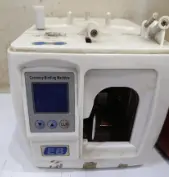The End of a Decades-Old Compromise
The long-standing gap between fieldwork and laboratory analysis is quickly narrowing. Professionals had to make a tough decision for decades: either gather samples for laborious laboratory analysis or rely on a small number of field instruments that degraded data quality. With integrated portable solutions that provide laboratory-grade results right at the point of need, modern analytical technology is now removing this compromise.
1.The Multi-Technology Approach: One Platform, Multiple Capabilities
Field analysis in the modern era is no longer limited to single-use tools. These days, the best systems combine different sensing technologies into a single, robust platform. This multi-technology approach makes it possible to monitor a wide range of characteristics without the need for numerous instruments or intricate setup processes, from simple electrochemical measurements to sophisticated spectral analysis.

2.Core Technical Features of Modern Field Analyzers

Simultaneous Multi-Sensor Operation
Concurrent data gathering from many sensor types, such as electrochemical, optical, spectral, and physical parameter sensors, is supported by advanced field systems.

Field-Ready Engineering
Unlike delicate laboratory instruments, field-deployable systems are built for challenging environments through shock-absorbent materials, weather-resistant enclosures, sunlight-readable displays, and extended battery operation.

High-Speed Data Acquisition
With some systems processing up to 100,000 data per second, modern portable instruments have remarkable processing capabilities that allow for real-time monitoring and prompt decision-making.
3.Adaptable Platform Applications
These systems' configurability is their real strength. Several applications can be served by a single platform:
- Environmental Assessment: Rapid on-site contamination screening and monitoring.
- Industrial Process Control: Real-time parameter tracking in manufacturing.
- Water Quality Management: Comprehensive multi-parameter water analysis.
- Research Fieldwork: Reliable data collection for laboratory studies.
4.The Evolution of Field Instrumentation
Several significant advancements are seen in the current trends in portable analytical systems:
- Improved Connectivity: Smooth data flow between central systems and field instruments.
- Support for expanding detecting technologies is provided by expanded sensor libraries.
- Intuitive User Interfaces: Simplified software and touch-screen controls minimize the requirement for training.
- Modular Architecture: Systems that adapt and expand as analytical requirements evolve.
5.
The Integration Advantage
There are several advantages to integrating various analytical technologies into a single platform:
- lower equipment costs by sharing parts.
- increased data correlation by measuring at the same time.
- shorter analysis times thanks to optimized procedures.
- improved data quality thanks to integrated calibration procedures.

